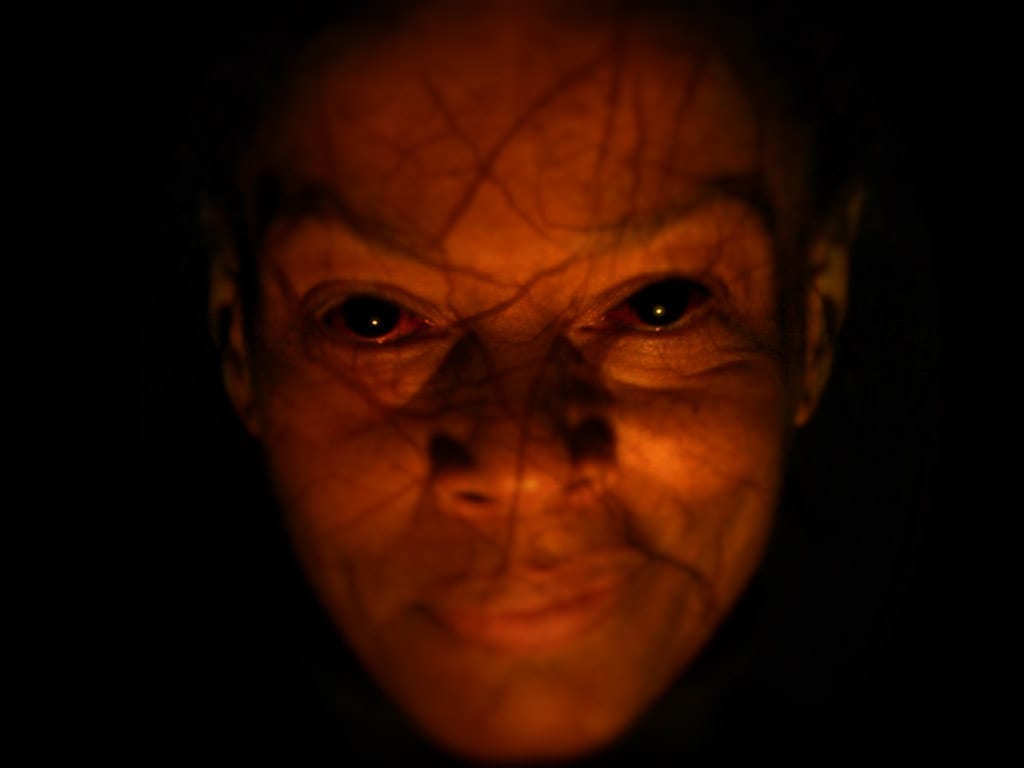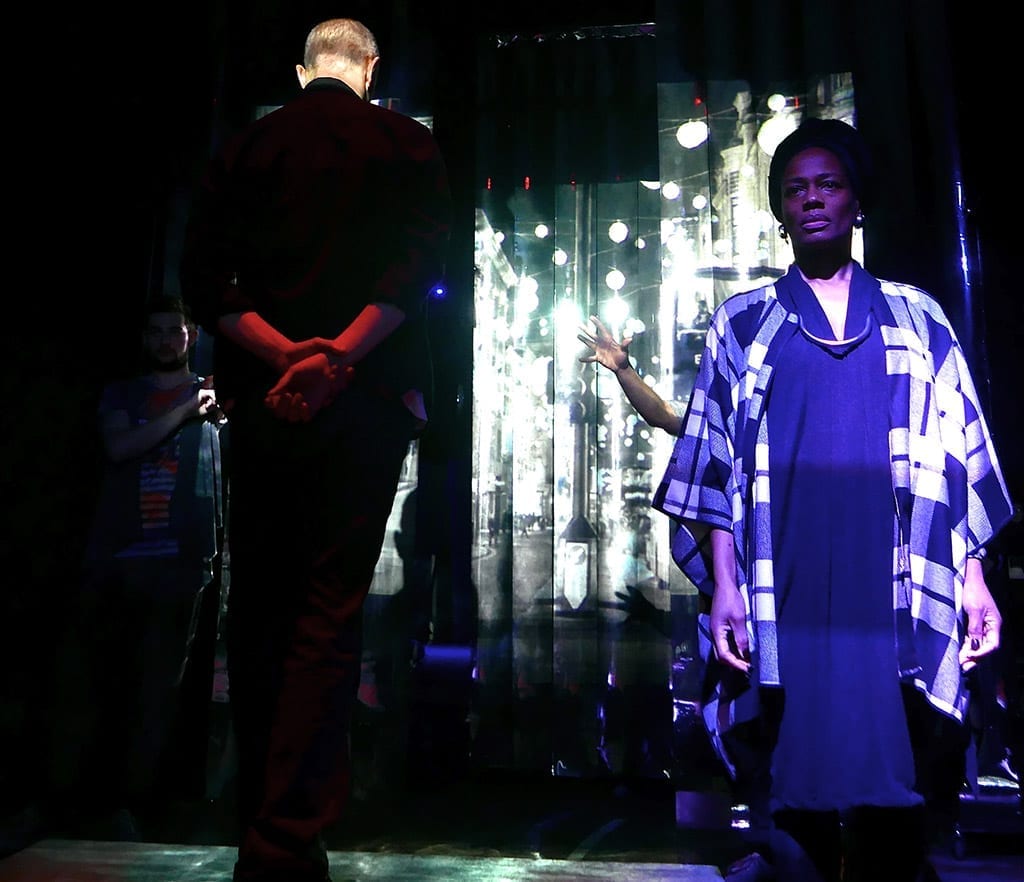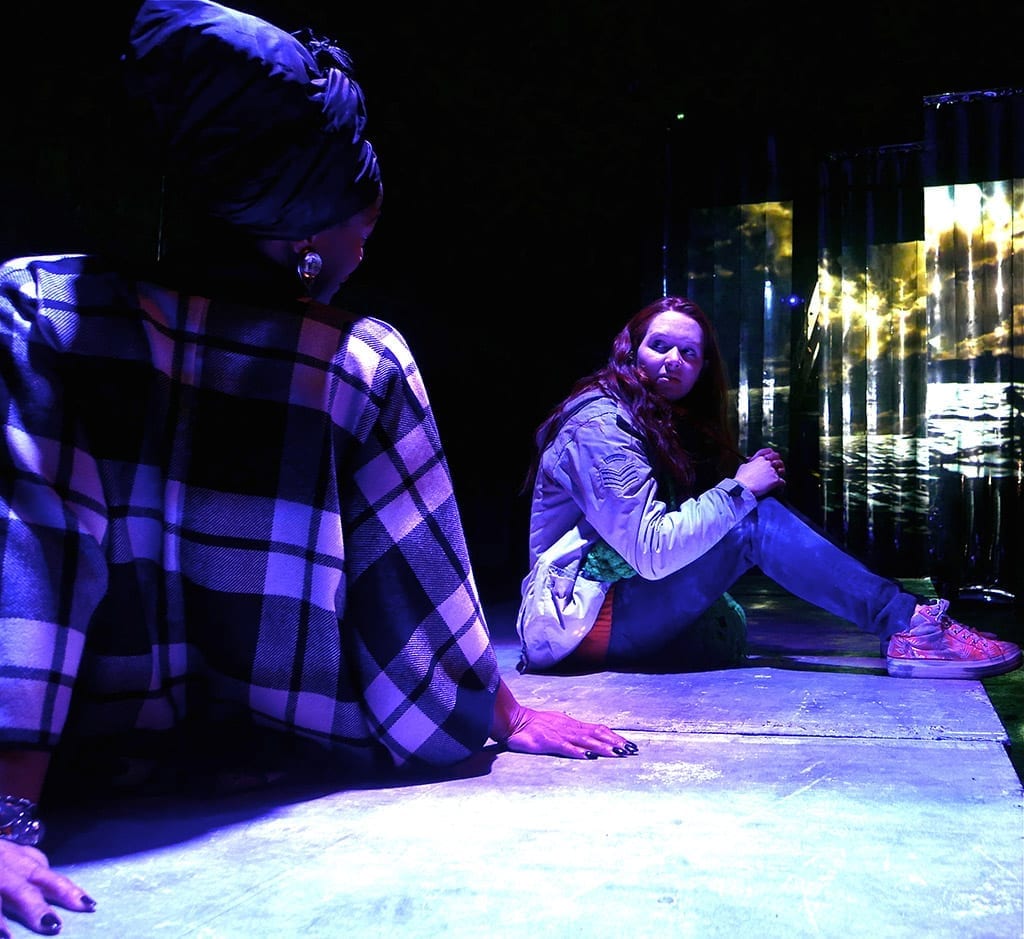THE VAULT FESTIVAL 2015
Buried underground just a stone’s throw from Waterloo station, The Vaults is the perfect home of the avant-garde, a rabbit warren of theatrical secrets. At the Vault Festival 2015, Hellscreen is proving a particularly popular secret. Whilst it occasionally strays close to the realm of the self-indulgent, Hellscreen is a creative, unusual piece that stayed with me long after I left the theatre.
Based on a 1918 Japanese horror story by Ryunosuke Akutagawa, Hellscreen tells the story of obsessive, depressive artist Frank Holt (Jonny Woo) whose wildly experimental art has made him an outcast with critics and audiences alike. His bleak outlook is counterbalanced by his daughter, Amy (Vanessa Schofield), who provides a source of hope and comfort for Holt. Burning to revolutionise the art world, but not knowing how, Holt comes across a mysterious, devilish art collector (Suzette Llewelyn) who promises him success, fame, and a chance to get his unique voice heard. But Holt does not realise that a deal with the devil always has a catch, and soon finds himself playing with fire in an artistic and personal sense. Through a mixture of live theatre, song, mime and animation, Hellscreen uses radical theatre to discuss the limitations and dangers of radical art. Does pushing the boundaries come at a price?
In her adaptation for the stage, Morgan Lloyd Malcolm has taken care to emphasise the role of the audience heavily. Eye contact with the characters was commonplace, and several times the actors interacted directly with those watching: before the show starts, the chorus hand out our seats in character, and during the course of the play, various audience members are asked to involve themselves in Holt’s art shows. As Holt (Woo) does this in an entirely different capacity within the play itself, this is an especially intelligent piece of meta-theatrical commentary. The barrier between the stage and those watching is thus carefully dismantled, reality and fiction creeping closer together. This makes the events of the play seem more dynamic, more real, and was thoroughly exciting to be around.
The acting is also impressive, with Jonny Woo giving an exceptionally strong performance as the archetypal tortured artist, the idealist longing to “say something” but finding himself stifled. The juxtaposition between he and the more practical, methodical Suzette Llewelyn was fascinating to watch. The sinister, polished face of corporate art dealership smiles with snake-like ease, whilst Woo falls into a deeper and deeper infatuation with his own work. However, whilst Vanessa Schofield performs her role well (her soprano voice being the highlight, gliding through the airy room like velvet) the character perhaps needs more development, a mere cardboard cut-out of the perfect daughter. Whilst this angelic quality is necessary, it could be little more nuanced. Perhaps this should be emphasised rather than some of the staging techniques. Large portions of Director Parish’s decisions are delightfully innovative: the use of film is creative, and the scattered bright and dark lighting add to the unsettling atmosphere. However, elements of the mime seem needless, cluttering Hellscreen without enhancing the story in any great sense. At moments like these, the piece seemed to become a little too focused on how it was telling the story rather than the story being told: in order for a play to be truly great, there should be a balance between the two.
Despite this small complaint, Hellscreen was a thought-provoking, fearless theatrical experiment in a wonderfully atmospheric location. The gambles it takes pay off the vast majority of the time, and one is left with a raw, genuine piece. You will be unlikely to find anything like it elsewhere: highly recommended.




